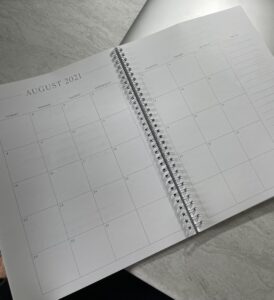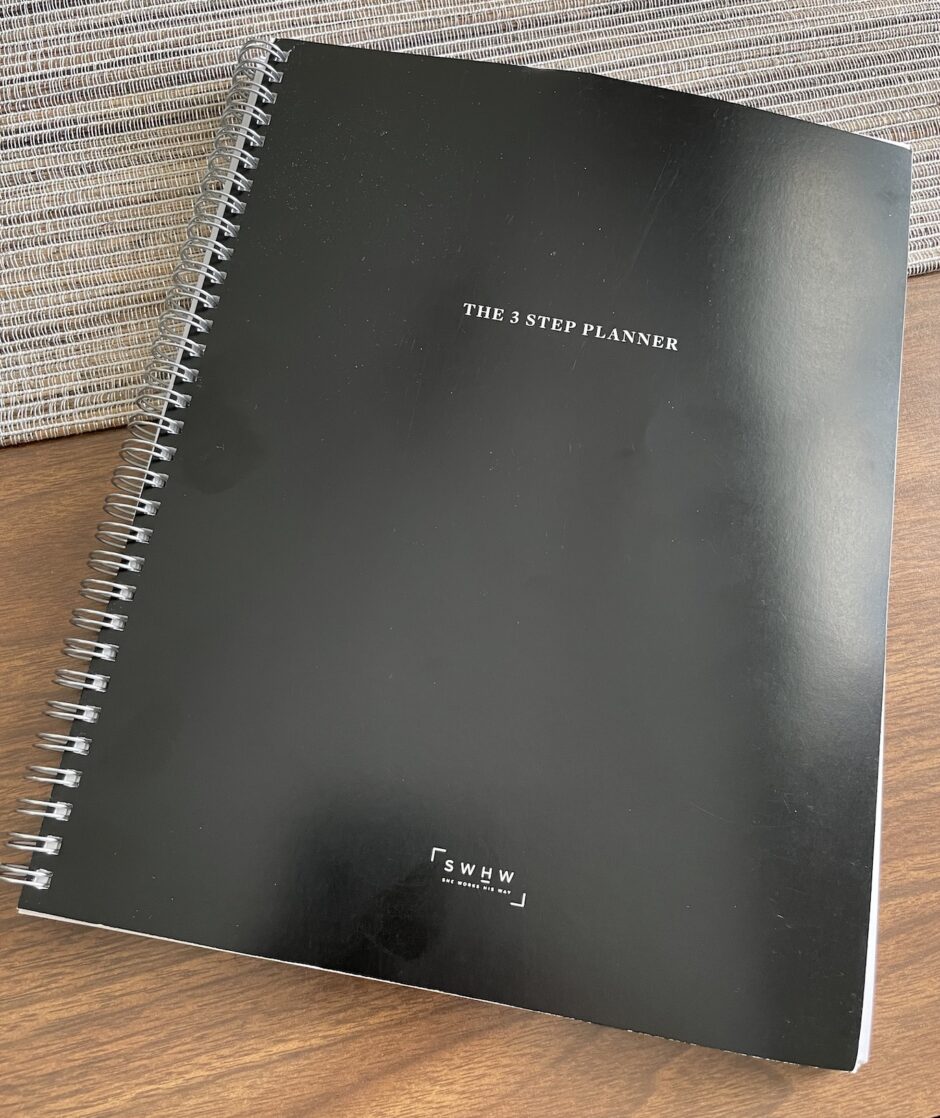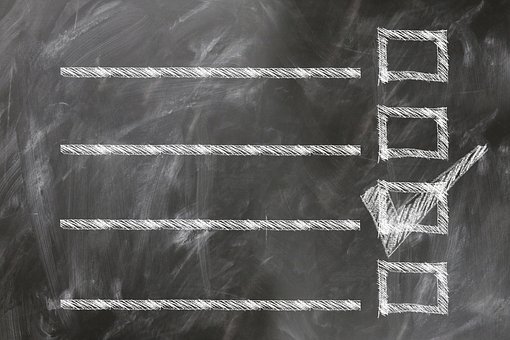This is not a paid endorsement. After recommendation from a friend, I simply wanted to check out this planner and share thoughts with you.
The planner is full page sized. You order a new one ($29) for every six months (available here), and the design is sleek and simple. If you like florals and embellishments, this will not fit the bill, but I enjoyed the purposeful absence of visual clutter.
There is plenty of room to write, and the system is week by week — which is my preferred way of dealing with my schedule.  Big win on the first page (instructions) where the user is encouraged to put future tasks out on future weeks as soon as they come up, instead of trying to remember them until then.
Big win on the first page (instructions) where the user is encouraged to put future tasks out on future weeks as soon as they come up, instead of trying to remember them until then.
Before each month you have the opportunity to list your 5 “non-negotiables” or priorities. That is a good opportunity to pause and think for a minute before diving into the details.
 There is a full month spread, so you are able to keep track of big schedule stuff at a glance, but then the pages turn to the 3-step process for each week. First, write out everything you need to do for the week. Then categorize it on the next page.
There is a full month spread, so you are able to keep track of big schedule stuff at a glance, but then the pages turn to the 3-step process for each week. First, write out everything you need to do for the week. Then categorize it on the next page.
 Finally, you turn to the week spread and schedule your tasks and time commitments. I found that two different colors works best for me in this format, to keep appointments with others (a little more inflexible) and my own time allocation (much more flexible) separate. Erasable pens are my choice here also. Things change!
Finally, you turn to the week spread and schedule your tasks and time commitments. I found that two different colors works best for me in this format, to keep appointments with others (a little more inflexible) and my own time allocation (much more flexible) separate. Erasable pens are my choice here also. Things change!
These three steps do require you to write the same things 3 times each week. If that inefficiency is not helpful, you could easily skip the dump page and put everything directly in the categories. Since there are only 3, the sorting will not be overwhelming as you go.
If you need to push anything to the next week, that is easily done. Otherwise, you will complete your planning at the end of each week for the next week. Step-by-step, you march through the year.
 Pros:
Pros:
- Simple, simple, simple
- Plenty of space to write
- Focus on priorities
- Weekly reset built in
- Super flexible
- Did I say beautifully simple?
Cons:
- $60+/year (although that is a completely reasonable price for a good planner)
- No clear contrast between time blocks and to-dos (i.e., I don’t need to set aside two solid hours for laundry, but I do need to remember to fit it in during the day)
- No pockets or folders to collect odd pieces of paper/receipts/invites/etc.
- Large size
- Writing the same thing multiple times each week

